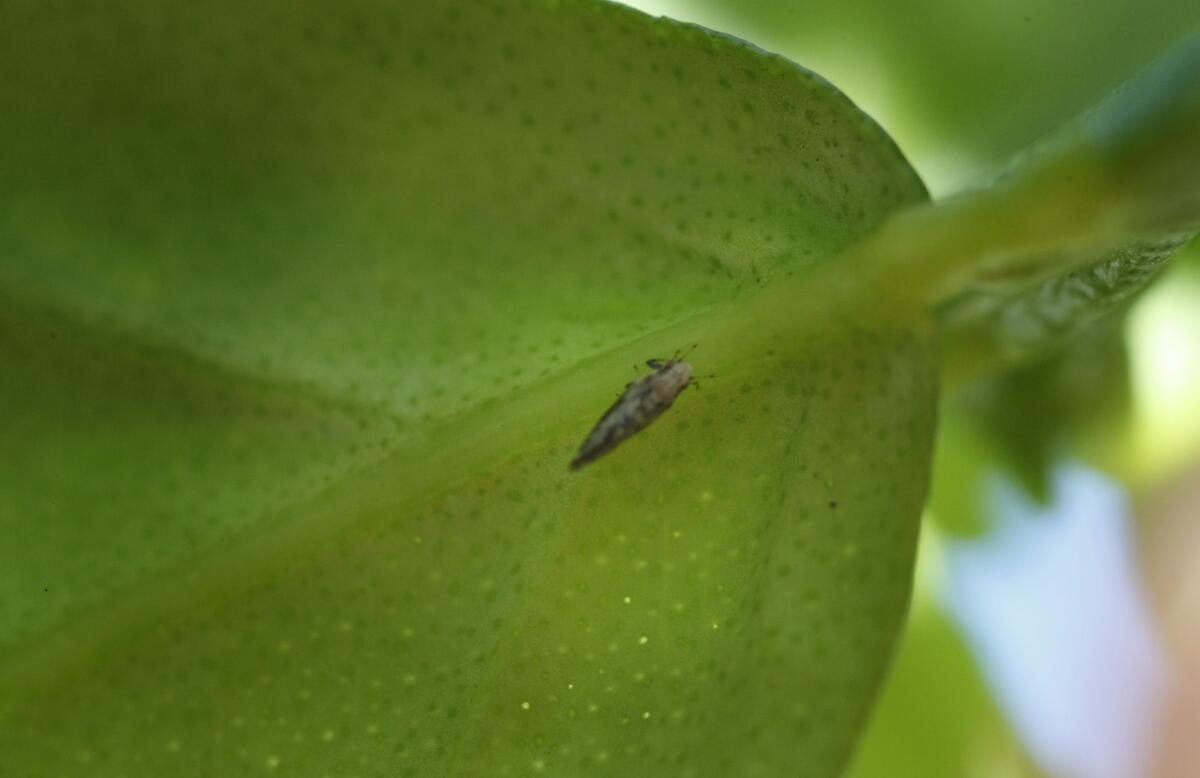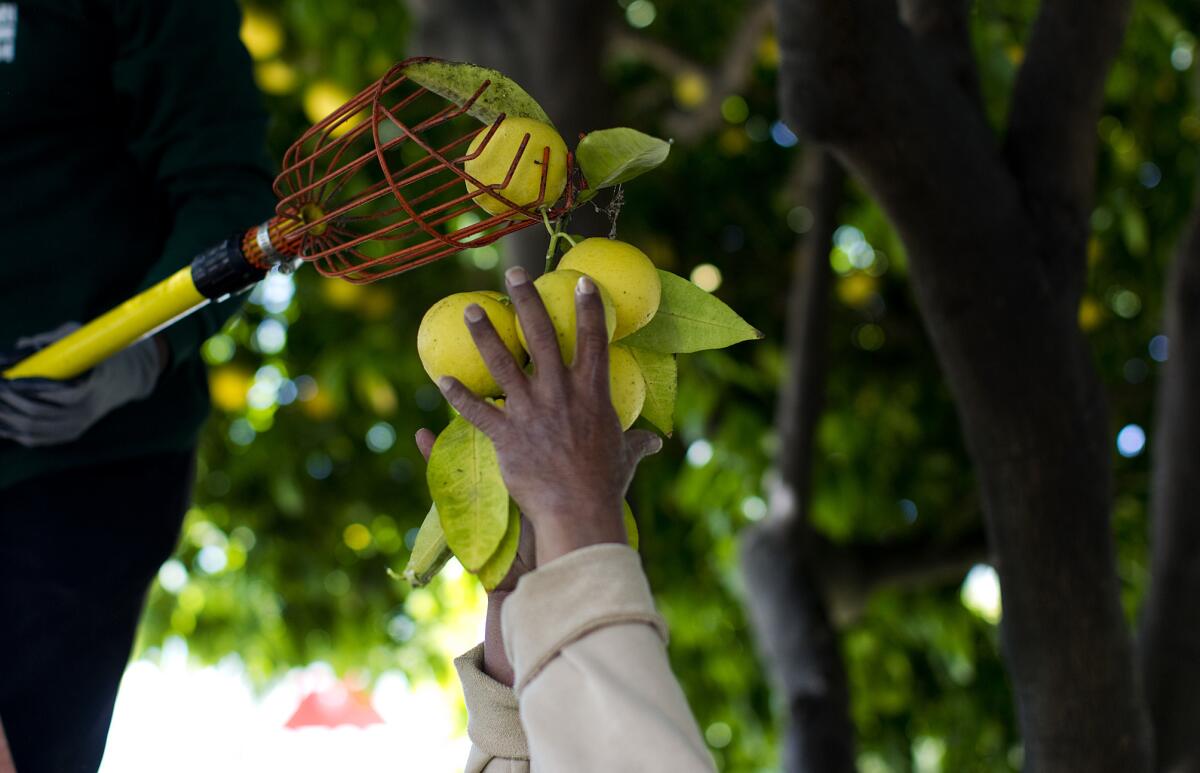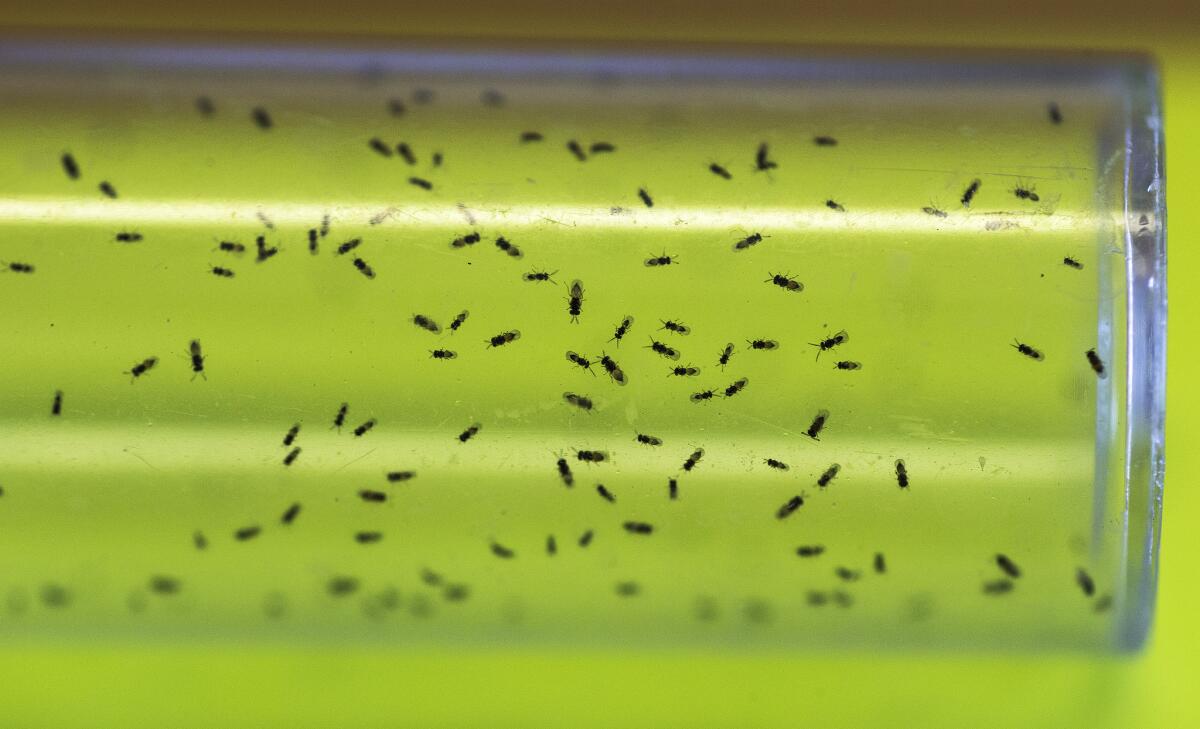What is citrus greening disease?
- Share via
The enemy

The bacteria that causes Huanglongbing, or citrus greening disease. (UC Riverside)
Candidatus Liberibacter asiaticus is a bacterium from Asia that colonizes citrus and citrus-related plants. It clogs their nutrition transport system, stunting fruit and causing it to stay green, a phenomenon known as citrus greening disease. Leaves and branches turn a mottled yellow, giving rise to the name Huanglongbing, the Chinese word for yellow dragon disease. Most scientists call the disease HLB.
The friend of the enemy

JUNE 19, 2013. PICO RIVERA, CA. A 1/4-inch-long psyllid feeds on the leaf of a citrus tree in Pico Rivera, CA. The invasive species of insect have been spreading a deadly bacteria in citrus trees throughout the Southland. (Don Bartletti / Los Angeles Times)
The Asian citrus psyllid spreads a bacteria lethal to citrus. (Don Bartletti / Los Angeles Times)
Citrus psyllid, or Diaphorina citri, is a tiny mottled-brown insect, about the size of an aphid, that transports bacteria from tree to tree. It feeds on leaves of citrus and other plants in the family Rutaceae, such as calamondin, box orange, Indian curry leaf and orange jessamine, or orange jasmine.
The friend of the enemy's friend

SAN JOSE, CA - APRIL 13, 2013: Volunteers harvest from a large old citrus tree in a central neighborhood in San Jose, California. (Gina Ferazzi / Los Angeles Times)
An aphid-sized bug, the Asian citrus psyllid, is found in most of Southern California. (Gina Ferazzi / Los Angeles Times)
Humans spread the psyllid by moving backyard fruit and plants.
The enemy of the enemy

RIVERSIDE, CA - JULY 23, 2015: Predatory wasps, Tamarixia radiata, fly around inside a cool test tube after breeding at the Department of Food and Agriculture on July 23, 2015 in Riverside, California. The wasp is used to attack the Psyllid, a parasite which contains a bacteria which is deadly to the state’s citrus industry. (Gina Ferazzi / Los Angeles Times)
Millions of predatory wasps have been released to combat the Asian citrus psyllid. (Gina Ferazzi / Los Angeles Times)
Tamarixia radiata, a predatory wasp from Pakistan, eats the young of the citrus psyllid, reducing the bug's population and decreasing the opportunities to spread the bacteria. Diaphorencyrtus aligarhensis, another exotic wasp, also preys on the psyllid.
Who you gonna call?
If you suspect psyllid infestation or HLB disease, call the California Department of Food and Agriculture hotline: 1-800-491-1899. More information is available online: https://www.californiacitrusthreat.org/
Follow me on Twitter: @LATgeoffmohan
Inside the business of entertainment
The Wide Shot brings you news, analysis and insights on everything from streaming wars to production — and what it all means for the future.
You may occasionally receive promotional content from the Los Angeles Times.








